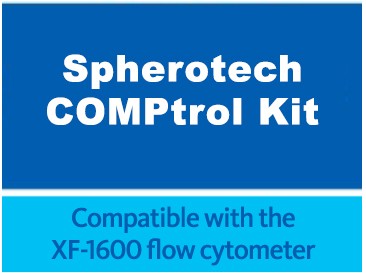Article successfully added.
Spherotech COMPtrol Kit
COMPtrol is used for setting up fluorescence compensation on a flow cytometer in order to correct for spectral overlap of fluorophores.
It contains two 5 mL vials of 3.0-3.4 μm beads in suspension at a concentration of approximately 1 × 107 beads/mL. COMPtrol Negative Beads act as a negative control and do not bind fluorochrome-conjugated antibodies. COMPtrol Positive Beads are coated with an IgG that will bind all mouse and rat isotypes, as well as Syrian and Armenian hamster IgG and rabbit polyclonal antibodies.
For Research Use Only. Not for use in diagnostic procedures.
Polystyrene beads <0.1% by weight.
- Product number: CMIGP-30-2K

